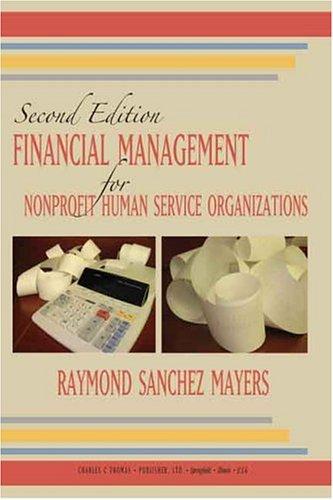Question
Discussion Board Review Chapter 14 Clinical Encounter vignettes and share your thoughts on your chosen vignette and add support to your views using sources referenced
Discussion Board Review Chapter 14 Clinical Encounter vignettes and share your thoughts on your chosen vignette and add support to your views using sources referenced in APA Clinical-
Encounter Vignette Part IV: Family History and Number Needed to Treat Mr. Brown has a younger sister, Mary OConnell, who is 33 years old. Mr. Brown asks her to see his doctor to have her cholesterol checked. Drs. Lore and Skeptic both find her to be generally healthy with no known cardiovascular risk factors, except that her father has heart disease. They each opt to check her serum cholesterol levels, which turn out to be just like her older brothers. Dr. Lore gives her the same advice he gave her brother and prescribes his favorite anticholesterol medicine, which costs $65 per month. Dr. Skeptic was prepared to prescribe cholesterol-lowering medi- cine to her brother, but he thinks about potential differences in efficacy (and cost-effectiveness) for this treatment between these siblings. First, he notes that women of Mrs. OConnells age were not included in the clinical trials that demonstrated that such medication reduces heart attack rates. But he decides to give such treatment the benefit of doubt, in the assumption that the medicine will have the same positive effect in young women that it shows in middle-aged men. On the basis of that assumption, Dr. Skeptic looks at the NNT. He finds that for a woman with Mrs. OConnells heart attack risk profile, the five-year NNT would be about 1,000 (Robson 1997; Wilson et al. 1998). That is, to prevent one heart attack using the best type of cho- lesterol medicine available, one would have to treat 1,000 women like Mrs. OConnell for five years. At $25 to $155 per month for medicine (depending upon the proven drug chosen), the drug cost alone would be $1.5 million to $9.3 million to prevent one heart attack. That does not include the costs of blood tests and doctor visits for follow-up. By contrast, the five-year NNT for her brother was approximately 35 (Downs et al. 1998; Shepherd et al. 1995), with an associated medica- tion cost to prevent one heart attack of about $52,500 to $325,500. Major differences in cost-effectiveness, attributable to differences in risk, are revealed by this simple calculation. The excessive cost to those who pool their funds for healthcare, plus the lack of proof that this medicine actually works in women in their thirties who are oth- erwise not at high risk of heart attack or stroke, leads Dr. Skeptic to advise against medication at this juncture, and to recommend diet and exercise.
Step by Step Solution
There are 3 Steps involved in it
Step: 1

Get Instant Access to Expert-Tailored Solutions
See step-by-step solutions with expert insights and AI powered tools for academic success
Step: 2

Step: 3

Ace Your Homework with AI
Get the answers you need in no time with our AI-driven, step-by-step assistance
Get Started


